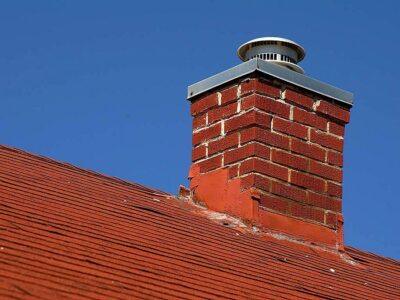How To Win The Battle With Creosote (And Prevent A Chimney Fire) See more on: http://totalsurvival.net/
chimney fire
According to the National Fire Protection Association, around 25 percent of all home-heating fires are caused by creosote buildup in chimneys – a serious statistic if you use wood to produce heat on a regular basis.
A chimney sweep is the best solution, and homeowners should considering getting one on an annual basis. With the proper tools and technique, though, you can do this yourself, but make sure you do it right. Chimney sweeps will tell you a lot can accumulate in stovepipes and chimneys over time, including tar glaze, slag, flakes and soot. Collectively, these elements create creosote and the potential for a chimney fire.
What’s a Chimney Fire?
Chimney fires can be terrifying events, and take place when the creosote in a chimney ignites and spreads. Temperatures in a chimney fire can exceed 2,000 degrees Fahrenheit (1,093 degrees Celsius). That’s more than enough to warp a stovepipe, melt a rain cap and spark arrestor, and then launch burning coals and ash onto a rooftop.
Those temperatures can also cause masonry and mortar to crack and potentially vent extremely hot gases and fire into flammable, internal structures like an attic.
New Solar Generators Deliver 4 Times More Power Than Previous Models!
Some of the typical symptoms of a chimney fire include:
- A loud crackling and popping noise.
- A lot of dense smoke.
- An intense, hot smell.
- Large and long flames emerging from the chimney.
- A sudden intense increase of the fire in the firebox due to the intense drafting caused by the fire in the chimney (think: firestorm).
If you have a chimney fire, call the fire department. In the short term, you can close down all vents to reduce air flow and throw a chimney fire suppressant in the firebox to diminish the fire, but that doesn’t solve the problem; it only delays it.

chimney fire
You should also be aware that not all chimney fires are so dramatic. Some smolder without significant flames, but the temperatures can be just as high as a flaming chimney fire. Dark, copious black smoke emerging from the chimney is sometimes a sign of this kind of chimney fire.
How to Prevent Creosote Buildup
The number one cause of creosote buildup is a cool flue. A cool flue can happen a variety of ways.
- A wood-burning stove is inserted into a fire place and the smoke is vented into a large, masonry chimney hat, allowing the smoke to linger and cool.
- The metal stove pipe travels through relatively cool spaces, reducing the temperature of the smoke and exhaust gases.
- The fire is burning too low, producing more smoke than heat.
- The wood is wet, green or unseasoned, resulting in a lower temperature fire that further encourages creosote buildup in a cool flue.
- A restricted air supply causing the smoke to linger in the flue.
One of the best analogies for how a cool flue encourages creosote buildup is the effect of exhaling your hot breath on a cold mirror. The fogged area you see is what happens in a cool flue, as smoke and unburned particles pass over the cooler surface.
If you are venting into an open masonry fireplace from an inserted wood-burning stove, you should have a double insulated stovepipe installed with a six-inch diameter. This will concentrate the heat from the fire and the exhaust gases rather than allowing them to linger in an open masonry fireplace that can be up to eight times the diameter of a six-inch stovepipe.
Certified stovepipes for wood-burning stoves are approved to withstand temperatures up to 2,100 degrees Fahrenheit. However, if you’ve had a chimney fire, you should still have the stovepipe checked to ensure it has not been warped or damaged.
Signs of a Chimney Fire
It’s possible you’ve had a chimney fire and don’t even know it. The danger is that any future creosote buildup could lead to another chimney fire in an already damaged system. Here are some clues to past chimney fires:
- Puffy or honeycombed creosote.
- Warped metal of the damper, metal smoke chamber connector pipe, or factory-built metal chimney.
- Cracked or collapsed flue tiles, or tiles with large chunks missing.
- Discolored and/or distorted rain cap.
- Creosote flakes and pieces found on the roof or ground.
- Roof damage from hot creosote.
- Cracks in exterior masonry.
- Evidence of smoke escaping through mortar joints of masonry or tile liners.
If you suspect you’ve had a chimney fire, call a chimney sweep as soon as possible. They can give you an accurate assessment of whether or not a chimney fire has occurred and the next steps for maintenance or repair.
The simple fact is that clean chimneys and stovepipes don’t cause fires. If you burn wood on a regular basis to heat your home, annual maintenance and advice from a professional is a must.
What advice would you add for preventing chimney fires? Share your tips in the section below:
Are You Prepared For Blackouts This Winter? Read More Here.
The post How To Win The Battle With Creosote (And Prevent A Chimney Fire) appeared first on Off The Grid News.
This Article Was Originally Posted On offthegridnews.com Read the Original Article herePost Source Here: How To Win The Battle With Creosote (And Prevent A Chimney Fire)
No comments:
Post a Comment